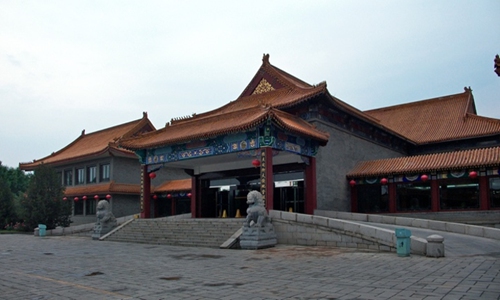History of Xiaotangshan Hospital
Source:Globaltimes.cn Published: 2020/3/30 1:46:23

Tangquan Xinggong at Xiaotangshan, Beijing, capital of China, May 24, 2006 Photo: VCG
Built in 2003 to quarantine and treat Severe Acute Respiratory Syndrome (SARS) patients, Beijing's Xiaotangshan Hospital has since been renovated and joined the battle against the ongoing novel coronavirus (COVID-19) pandemic. Other than fighting diseases, the history of Xiaotangshan remains largely unknown.
The earliest known written records on Xiaotangshan can be traced back to the Northern Wei Dynasty (386-534) in the Commentary on the Water Classic, a work that explores ancient geography in China by Li Daoyuan.
In Dayuan Dayitong Zhi, the imperial geography of the Yuan Dynasty (1279-1368), it noted the medical benefits of Xiaotangshan's hot spring.
During the Ming Dynasty, the imperial families started building gardens and palaces in the area designed for short visits. In 1715, during the Qing Dynasty (1644-1911), Emperor Kangxi built Tangquan Xinggong, an imperial palace meant for short visits in Xiaotangshan, but was later demolished by the Eight-Nation Alliance consisting of troops from Britain, the US, Germany, France, Russia, Japan, Italy, and Austro-Hungary in 1900.
After it was refurbished in 1912, Xiaotangshan gradually became a cluster of private mansions. A restaurant and park were named after it and both received many notable visitors.
During the Nobel laureate Rabindranath Tagore's trip to China in 1924, he visited Xiaotangshan, and later shared his memories with his companions, including reputed Chinese scholar Xu Zhimo and architect Lin Huiyin.
Xiaotangshan was also damaged during the War of Resistance against Japanese Aggression (1931-1945). In the 1950s, it reopened as a sanatorium and health resort.
While Xiaotangshan has had its share of ups and downs throughout its long history, it stands solemnly today, sheltering those in need while unwaveringly fighting diseases.
Posted in: SOCIETY,CULTURE & LEISURE